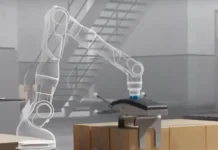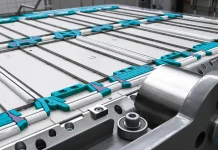by Gail Bullen, Business Development Manager, Avanti
Let’s face it, your business has fundamentally changed over the past few years. You now have dozens, if not hundreds, of “micro” orders coming into the shop every day: short-run jobs that customers expect at a very fast turnaround time. You know you can’t touch a $500 order 10 times and expect to make any money. You hear the constant message to “automate now,” but struggle with where to start.
When it comes to automation, or any large change, the long road starts with those first small steps. Here are 10 areas where your business can benefit from automation right now.
The 10 time-consuming tasks you should automate now
Automation of your entire workflow makes sense, to ensure you connect islands of automation, which can cause bottlenecks further down the line. The following list works through the top 10 automation tasks, based on the print workflow process:
- Web-to-print
- Estimating
- Order Creation
- Material Planning
- Production Planning
- Production Workflow
- Real-time Notifications
- Status and Costing
- Shipping
- Invoicing
Web-to-print
Stop the time-consuming task of walking your clients through the printing process and move to web-to-print. Your web-to-print portal is your 24/7 communication vehicle for customers; the key way to become “the print shop that never closes.” Customers can submit orders any time, night or day. Fortunately, the customers have already done the “heavy lifting;” they have entered all the job details into the portal; description of the job (printing and finishing), quantity, substrate, special notes, submitted the file to print and provided the shipping information.
Estimating
In today’s competitive environment, two things are key when it comes to responding to customers’ requests for quotes (RFQ): speed and consistency.
Customers are simply unwilling to wait for a reply to their request for quote. In many cases, whoever replies the fastest gets the order. Quick turnaround is essential.
As for consistency, regardless of who puts the quote together, it is extremely important that everyone comes up with same number, uses the same estimating standards, includes everything required in the quote and has access to historical information about what it cost to run a similar job in the past. That ensures you eliminate, as much as possible, the potential for human error.
The secret to getting that high-level of consistency is quote automation. In this case, that automation is in the form of templates. Templates ensure all tasks and materials are accounted for when its time to quote. It is imperative to have a system that supports different templates that cover all lines of business. The template requirements of a sophisticated offset job (ganging, plates, makeready, wash-up) are very different than short-run digital (click charges, imposition), which is different from large format (wide variety of substrates, square feet calculations).
Automating the quoting process for the “simple” jobs means that tasks can be given to sales reps and CSRs to speed up turnaround time and potentially win more business. They also will reduce the effort of your estimating team, leaving them to focus their magic on the more complex tasks.
Order creation
As soon as customers approve the quote, in their mind, the clock starts ticking. Your ability (or inability) to get the job on-boarded in a timely fashion will not change when the customer expects that job to be delivered – but it can seriously impact your ability to meet that deadline – especially if that order requires something to be purchased to produce the job.
You need to input the job into your system as fast as possible to give visibility to everyone that needs it: purchasing, production planning and operations.
There are multiple ways for an order to make its way into the shop: through your web-to-print portal, converting of an estimate, phone-in or email, or even an excel spreadsheet. With the exception of phone-in or email, the on-boarding of all of these sources of new jobs can and should be automated.
Re-keying information already captured somewhere else slows you down and leaves room for human error.
Material planning
Sound familiar? A customer gives you an order and upon accepting the order, you discover you don’t have the necessary material needed to fulfill the job.
If inventory falls below critical levels, you are opening yourself up for trouble. In today’s world where customers demand same day turnaround, you need to stay proactive about ordering materials before you actually need them.
Of course, the other extreme can be even more expensive to the business: you order more than you require, just to make sure you never run out or because you aren’t really sure what quantity you have on hand.
It’s time to automate the material planning. Implement a system that is aware of minimum levels, bare minimum levels, economic order quantities and leads times.
You then can use that information to optimize inventory levels, monitor material requirements for orders in the system and automatically generate a purchasing plan for the given period (day, week, month).
Production planning
Getting more jobs out on time is what it’s all about.
The days of “10 jobs making their way through the shop in the next 10 days” have been replaced with “10 jobs making their way through the shop in the next hour.” You don’t have time to manually schedule and plan smaller orders and run the risk of it taking longer to schedule orders than to run them. You need orders, once on-boarded, to arrive automatically in a department’s queue or run list for a particular piece of equipment.
Automating the run list of the “micro” jobs is one thing. For that, all you really need is an easy-to-use tool that can help manage the order in which jobs will run (i.e. quickly change the sequence of jobs to get several jobs out that are “stuck” behind a large, less urgent job, or to batch similar jobs to limit substrate changes).
More complex jobs need a more sophisticated tool – one able to manage finite capacity, automate the ganging of jobs and allow production planners to play with “what if” scenarios.
This provides you with the flexibility to adjust your schedule before locking and publishing it for everyone to see. When you automate this aspect of your workflow, you will be able to override schedules and change job priorities to meet shifting deadlines. The result is limiting “lateness” and maximize the number of jobs that get out on time.
Production workflow
Often, the greatest challenge is getting your administrative systems (quoting, job ticketing, scheduling CRM, billing systems) to share data with your production systems (prepress, production and bindery equipment).
Automating the sharing of information between these two types of systems can speed up throughput by eliminating the need to reenter job information already captured elsewhere.
Real-time notifications
You have hundreds of jobs making their way through the shop every day. How do you know if something is off the rails? A lack of visibility can make you feel like you have a lack of control.
This is where triggers and alerts can make a key impact. Real-time triggers and alerts allow you to automatically send notifications to anyone (both staff and/or your customers) to let them know that something is ready for review, to be ordered or is off schedule. There also can be a trigger so when an invoice has been completed, it is sent automatically to a customer or it can automatically send a shipping notification email to a customer the moment an order has been shipped – with the tracking number automatically included.
With automated triggers and alerts, you set the parameters that define the event, what action needs to be performed and who the alert should be sent to.
Job status and costing
Given the sheer amount of jobs running through your shop, tracking jobs and their costs can be a real challenge. If you aren’t capturing your costs, how do you know where you’re making money and where you’re bleeding dollars?
When a job ran for days, you didn’t mind the manual effort required to track its status and the amount of materials used (paper, ink, etc.). However, you can’t afford to invest the time to track “micro” digital orders – so most don’t bother and just use the estimated cost as your actual cost.
However, estimated cost is exactly that – it is just an estimate of how long a task should take and how much material a job should use. A feasible way of tracking these “micro” orders is through automation. Having this critical and accurate information right at your fingertips ensures you will make much better business decisions.
Shipping
Getting orders to your customers on time is a top priority. A late delivery can damage your reputation and jeopardize that relationship. In today’s competitive world, you are only one late delivery away from your customer switching vendors.
Automation can significantly improve on-time delivery via batch shipping and real-time integrations with numerous shipping courier providers such as UPS and FedEx. This completely eliminates the need for outside systems and the hassle of manually keying in hundreds of shipments.
By automating your shipping process, the system will automatically email shipping notifications and tracking details to your customers, ensuring they always are kept in the loop regarding their order status.
Invoicing
Getting invoices out in a timely fashion is the key to effectively managing cash flow. Every day you delay getting an invoice out the door is another day you delay getting paid.
However, the time and effort required to get a $50 invoice out is not much different than an order worth $5,000.
With automation, the billing department always will have a list of jobs that are ready to be invoiced, whether they have been partially shipped, fully shipped or haven’t had anything shipped, but is invoiced as a part of a contract you have with the customer.
Because invoices are automatically populated with order information and pricing created at the time of estimate or order entry, errors are greatly reduced and hours saved on administration.
Summary
In summary, automation of your workflow tasks will save you much more than money. Automation will help you accomplish the following:
- Streamline the on-boarding of orders.
- Help identify bottlenecks that slow down your ability to get jobs out on time.
- Control the flow of work in process.
- Eliminate breakpoints in your workflow.
- Automate interactions with your clients.
- Help you better respond to a rush order or important customer requests.
- Notify purchasing when inventory levels are low.
- Provide real-time business intelligence for better decision making.
- Better understand your print shop’s costs down to the penny
Since 1984, Avanti has created products that put the customer first, culminating in Avanti Slingshot print management software. Integrated modules extend from online order entry through to production and billing. For more information, visit www.avantisystems.com.





